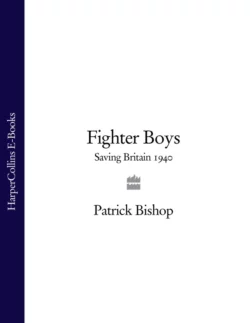Fighter Boys: Saving Britain 1940

Patrick Bishop
Тип: электронная книга
Жанр: Историческая литература
Язык: на английском языке
Стоимость: 775.68 ₽
Статус: В продаже
Издательство: HarperCollins
Дата публикации: 16.04.2024
Отзывы: Пока нет Добавить отзыв
О книге: The Battle of Britain is one of the most crucial battles ever fought, and the victory of Fighter Command over the Luftwaffe has always been celebrated as a classic feat of arms. But, as Patrick Bishop shows in this superb history, it was also a triumph of the spirit in which the attitudes of the pilots themselves played a crucial part.Reaching beyond the myths to convey the fear and exhilaration of life on this most perilous of frontlines, Patrick Bishop offers an intimate and compelling account that is a soaring tribute to the exceptional young men of Fighter Command.Note that it has not been possible to include the same picture content that appeared in the original print version.